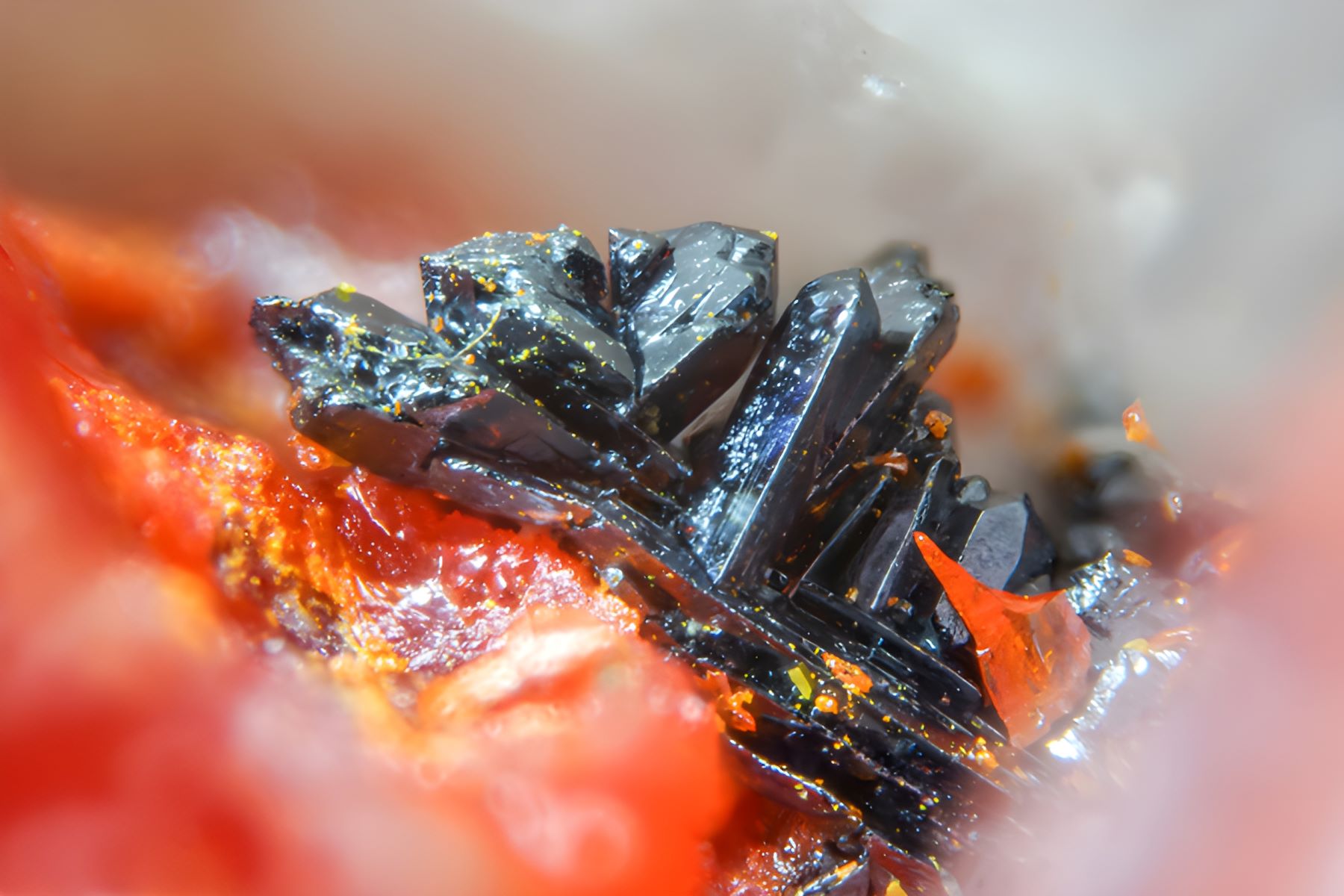
Christite is a rare and fascinating mineral that captures the interest of geologists and collectors alike. Found in only a few locations worldwide, this mineral boasts a unique composition and striking appearance. But what exactly makes Christite so special? Christite is primarily composed of thallium, sulfur, and antimony, giving it a distinctive red hue. Its rarity and unique properties make it a sought-after specimen for mineral enthusiasts. In this blog post, we will delve into 30 intriguing facts about Christite that highlight its geological significance, unique characteristics, and the reasons behind its allure. Whether you're a seasoned geologist or just curious about rare minerals, these facts will surely pique your interest.
Key Takeaways:
- Christite is a rare and toxic mineral with unique properties, found in small quantities in specific geological settings. It's primarily of interest to collectors and researchers studying thallium minerals.
- Due to its toxicity, Christite requires careful handling and storage in sealed containers. It provides insights into geological processes and has potential applications in electronic devices, though limited by its toxicity.
Christite: A Fascinating Mineral
Christite is a rare and intriguing mineral that captures the interest of geologists and collectors alike. Its unique properties and origins make it a subject worth exploring. Here are some fascinating facts about Christite.
-
Christite is a rare mineral composed primarily of thallium, sulfur, and arsenic.
-
It was first discovered in 1964 in the Allchar deposit in North Macedonia.
-
The mineral is named after Charles Christ, a prominent mineralogist who contributed significantly to the study of thallium minerals.
-
Christite typically forms in hydrothermal veins, which are cracks in the Earth's crust filled with hot, mineral-rich water.
-
The mineral is often found in association with other thallium minerals like lorándite and routhierite.
-
Christite crystals are usually tiny, often less than a millimeter in size, making them challenging to study.
Physical Properties of Christite
Understanding the physical properties of Christite helps in identifying and studying this rare mineral. Here are some key characteristics.
-
Christite has a metallic luster, giving it a shiny, reflective appearance.
-
The mineral is opaque, meaning light does not pass through it.
-
Christite is relatively soft, with a Mohs hardness of about 2.5, similar to gypsum.
-
It has a high specific gravity, around 6.2, indicating it is quite dense.
-
The color of Christite ranges from lead-gray to black, depending on its composition.
-
Christite crystals often exhibit a tabular or prismatic shape, though they can also be granular or massive.
Chemical Composition and Structure
The chemical makeup and structure of Christite are crucial for understanding its formation and properties. Here are some details.
-
Christite's chemical formula is TlHgAsS3, indicating it contains thallium, mercury, arsenic, and sulfur.
-
The mineral belongs to the monoclinic crystal system, characterized by three unequal axes with one oblique angle.
-
Christite's structure consists of layers of thallium and mercury atoms separated by layers of arsenic and sulfur atoms.
-
The presence of thallium and mercury makes Christite highly toxic, requiring careful handling.
-
Christite can undergo alteration, transforming into other minerals like lorándite under certain conditions.
Occurrences and Locations
Christite is found in specific geological settings around the world. Here are some notable occurrences.
-
The Allchar deposit in North Macedonia is the most famous locality for Christite.
-
Christite has also been found in the Jas Roux deposit in France.
-
Other occurrences include the Lengenbach Quarry in Switzerland and the Rodna Mountains in Romania.
-
The mineral is typically found in low-temperature hydrothermal veins, often associated with volcanic activity.
-
Christite is usually found in small quantities, making it a prized specimen for collectors.
Uses and Applications
While Christite is not widely used due to its rarity and toxicity, it has some specialized applications. Here are a few.
-
Christite is primarily of interest to mineral collectors and researchers studying thallium minerals.
-
The mineral's unique properties make it a subject of study in crystallography and mineralogy.
-
Christite can provide insights into the geological processes that form hydrothermal veins.
-
Due to its thallium content, Christite is sometimes studied for its potential use in electronic devices, though this is limited by its toxicity.
Safety and Handling
Given its toxic components, Christite requires careful handling. Here are some safety considerations.
-
Thallium and mercury in Christite are highly toxic, posing health risks if inhaled or ingested.
-
Handling Christite requires protective equipment like gloves and masks to prevent exposure.
-
Christite specimens should be stored in sealed containers to minimize the risk of contamination.
-
Researchers studying Christite must follow strict safety protocols to avoid exposure to its toxic elements.
The Final Word on Christite
Christite, a rare mineral, holds a unique place in the world of geology. Found mainly in Chile, it’s known for its striking red color and crystal structure. This mineral, composed of thallium, arsenic, and sulfur, fascinates scientists and collectors alike. Its rarity and beauty make it a prized specimen.
Understanding Christite’s properties helps us appreciate the complexity of our planet’s geology. Its formation process, involving volcanic activity and hydrothermal systems, showcases nature’s incredible power. While not widely known, Christite’s significance in mineralogy cannot be overstated.
For those passionate about geology or mineral collecting, Christite represents a remarkable discovery. Its unique characteristics and limited availability make it a true gem in the mineral world. So, next time you come across a piece of Christite, remember the fascinating story behind this extraordinary mineral.
Frequently Asked Questions
Was this page helpful?
Our commitment to delivering trustworthy and engaging content is at the heart of what we do. Each fact on our site is contributed by real users like you, bringing a wealth of diverse insights and information. To ensure the highest standards of accuracy and reliability, our dedicated editors meticulously review each submission. This process guarantees that the facts we share are not only fascinating but also credible. Trust in our commitment to quality and authenticity as you explore and learn with us.


